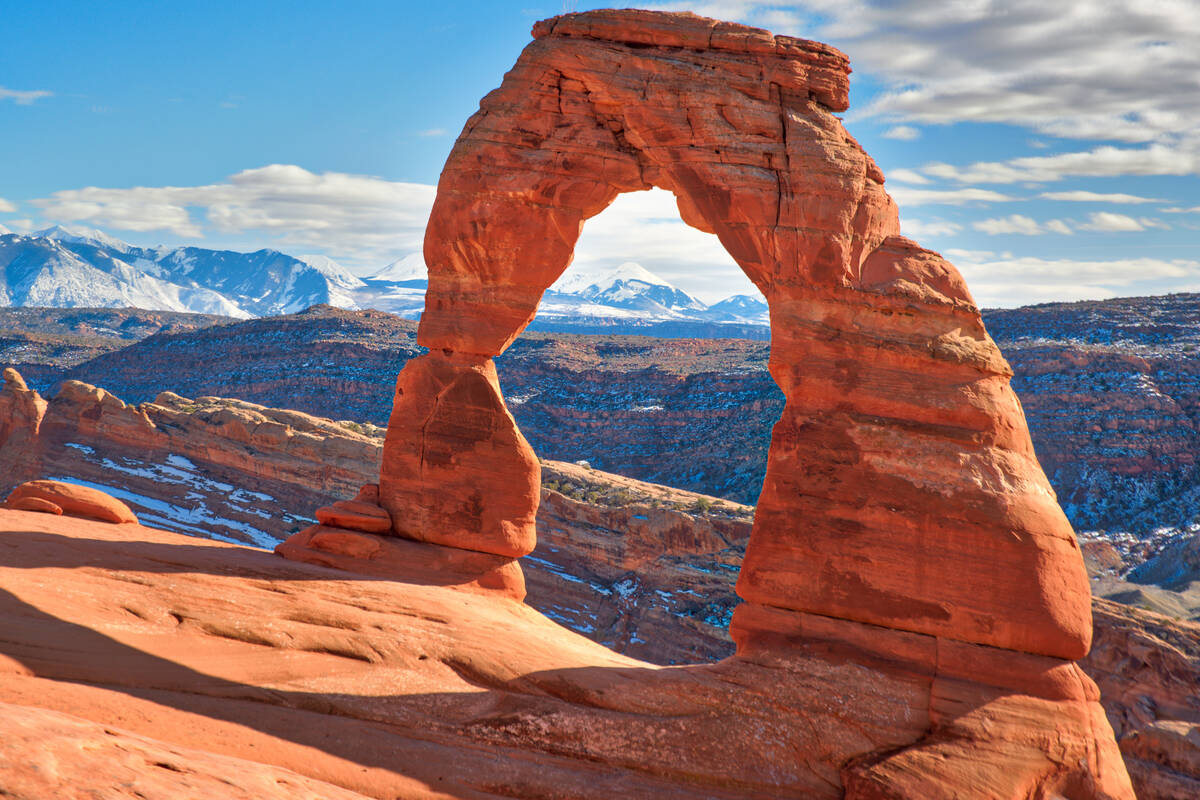Utah has 6,000 arches. How many are in danger of collapsing?
SALT LAKE CITY — A common line of questions has emerged from visitors to Utah’s Arches National Park in the week since an iconic rock arch at Lake Powell known as the “Toilet Bowl” collapsed.
Are these arches also at risk of falling soon? What are you doing to prevent their collapse?
The answers: They might be, and nothing, said Karen Garthwait, spokesperson for Arches and Canyonlands national parks.
“Our mission is not to freeze time and preserve these structures exactly as they are,” she said. “Our mission is to preserve the natural processes that create these structures, which of course, is the same process that will eventually undo them as well.”
When the geological formation formally named “Double Arch” crumbled last Thursday at Glen Canyon National Recreation Area, it served as a sad reminder to many that arches are not guaranteed to stand forever. All arches have a lifespan, which scientists are trying to avoid shortening — or extending.
Experts say human activity has sped up erosion within the past hundred years, making arches susceptible to crumbling at any given time. But when exactly they might fall can be tough to predict.
The outward appearance of an arch gives little indication of its stability. Those that appear most sturdy can have internal cracks, while others that appear to defy gravity may better withstand the elements.
Southern Utah’s sandstone bedrock is strong enough to support the weight of large arches — one of the sturdiest shapes found in nature — but soft enough to be sculpted over time by wind, water and gravity, according to the Utah Geological Survey. The region’s semi-arid climate also plays an important role in forming and sustaining the sandstone wonders.
Human impact
While the National Park Service is not physically fortifying arches — it abandoned a plan to coat one in plastic in the 1940s — it has enacted strict policies to limit human impact on the natural structures.
As recently as two decades ago, parkgoers could be seen walking on top of some arches and hanging on them for photos. A climber even scaled Delicate Arch, the most widely recognized of Utah’s more than 6,000 arches, leaving rope grooves in the sandstone that Garthwait said can still be seen today. The ascent led park officials to reword regulations in 2006 to make clear that climbing arches is prohibited.
At Lake Powell, a large reservoir on the border of Utah and Arizona, families often climbed the now-fallen arch and plunged into a swimming hole below, even though the recreation area bans cliff jumping. Park rangers and geologists suspect frequent foot traffic and changing water levels contributed to the arch’s demise. The reservoir’s water levels have been declining due to drought and climate change since 2001, according to the National Park Service.
“Some people have the sense that rock is strong and humans don’t affect it,” said Jeff Moore, a geology and geophysics professor at the University of Utah. “When these kinds of collapse happen, it’s a reminder that arches are really fragile. Subtle changes can make a difference.”
Moore has led research projects that measure the seismic activity beneath Utah’s arches and use civil engineering principles to assess their structural health. The rock formations are constantly vibrating, he said, and human-made energy sources such as trains, trucks and helicopters are increasing those vibrations, placing stress on the arches and accelerating crack growth.
The Federal Aviation Administration imposed air restrictions last year for helicopters flying near Utah’s Rainbow Bridge National Monument — one of the world’s largest known natural bridges — to avoid vibration-induced damage in light of Moore’s research.
‘Really rapid change’
Humans have dramatically changed the vibration landscape within the last century, he said, and more arches could soon fall as a result.
“This is a really rapid change in the lifespan of an arch,” Moore said. “Geology moves slowly. Humans have arrived quickly and, in some places, are making dramatic changes in the environment.”
A U.S. Bureau of Reclamation facility in western Colorado that removes salt water from the Colorado River system and injects it deep into the ground has also been linked to earthquakes near Utah national parks. The site was temporarily closed after a 4.5 magnitude earthquake was recorded there in 2019 but has since resumed operations at a reduced rate.
For Richard Beckman, president of the Natural Arch and Bridge Society, knowing that some of the world’s most iconic arches might fall in his lifetime adds a sense of urgency to visit them before they’re gone.
“It’s like losing an old friend,” Beckman said. “I’m sad to see them go, but I’m hurt more by the arches that collapsed that I never saw in person. We don’t know how long they’re going to last, so you have to go appreciate them.”


























